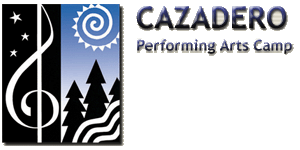Lesson Plan
37:
Four Groups of Land Plants
First posted June 24, 2004 Last
updated June 24, 2004
( Grade Level 9-12)

Remember these points from the Lesson
Plan Homepage:
(1) These lesson plans are not rigid requirements,
but a starting point for the Nature Counselor's
plan for teaching a particular day's experience.
(2) The activity should be fun and emphasize
active learning on the student's part: ask a
question, don't just state a fact.
(3) You should employ hands-on as much as possible.
(4) Plan each session to also allow time for
making entries in the Nature
Journal. |
Prior to the
session
(1) Review the section on the
Four Groups of Land Plants. Most
students will know a few members of each group.
(2) Be ready with examples from around Cazadero. Know
where to find some of them, and plan where you will
stop for discussions and drawing.
(3) Have some tape for taping leaves in the Journal.
Session
(1) Start with walking around camp, observing various
types of living things, especially if you have already
done the Five Kingdoms of Life. Be sure to have them
look at members of each of the kingdoms.
* Where does the Plant Kingdom fit in? (Plants create
food via photosynthesis, animals eat food, fungi absorb
food, bacteria are single celled and small).
* Go over the Five Kingdoms.
* Mention the Four Groups.
(2) Find an area where you can examine a moss.
* Notice that they do not have leaves or stems.
* Do they like wet or dry areas?
* Look for a dry moss, wet it and watch it turn green.
* Draw a picture of a moss.
(3) Find an area where you can examine a fern.
* Notice that they have leaves, but all come from
the base.
* Look for sori (sporangia containing spores on the
underside of the leaves)
* Can you find both a bracken fern and a sword fern?
How are they different?
* Draw a picture of a fern. Put a leaf in the Journal
(ony dry ones)
(4) Find a conifer and cones.
* Examine the needles, how are they different from
fern leaves? Other plant leaves?
* Can you find redwoods and Douglas-firs?
* Look for their cones, how are they different? (Be
sure to talk about the mouse feet and tails on the
Douglas-fir cones.)
* Draw a picture of a conifer. Put a leaf in the Journal.
(5) Find a flowering plant.
* Examine the leaves. How are they different?
* Find a flower on a plant, discuss how important
they are, mention fragrance, have them sniff it.
* Draw a picture of a flowering plant. Put a few kinds
of leaves or flower petals in the Journal.

References
Back to the Lesson
Plan Homepage
|

